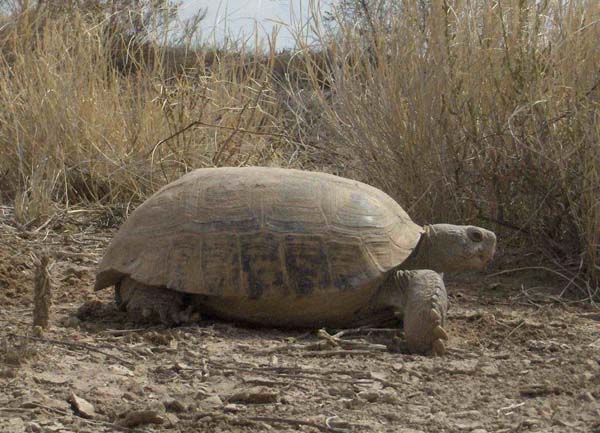Wildlife North America . com North American Animals - mamals, birds, reptiles, insects |
Bolson Tortoise (Gopherus flavomarginatus)
Bolson tortoise in Mexico Photograph by Mbtrap. Some rights reserved. (view image details)
BOLSON TORTOISE FACTS
DescriptionThe Bolson Tortoise is the largest North American tortoise species. It was discovered as recently as 1959. The Bolson Tortoise is a terrestrial tortoise with a high-domed brownish carapace. The front legs have heavy claws and are flattened for digging. The back legs are stumpy. Males are slightly larger than females. Male tortoises have a concave plastron, while females have a flat plastron. The scutes often have grooved concentric rings. The head is small and rounded. The tail is of short. Other Names Mexican Giant Tortoise, Yellow-margined Tortoise, Mexican Gopher Tortoise Size carapace length to about 46cm Environment Bolton Tortoises live in colonies of up to 100. They feed during the early morning and evening. They hide in burrows during the heat of the day. They dig burrows in the sand with their forelimbs. In winter, they hibernate in their burrows. Food Bolson tortoises feed mainly on wiry Tobosa bunch grass Breeding Mexican Bolson tortoise lay 12 to 15 eggs. Bolton Tortoise lifespan has been estimated at up to 80 to 100 years, Range The Bolson Tortoise is found in the Chihuahuan Desert in north-central Mexico. Conservation Status The conservation status in the 2004 IUCN Red List of Threatened Animals is "vulnerable". Classification
Relatives in same Genus Desert Tortoise (G. agassizii) Texas Tortoise (G. berlandieri) Gopher Tortoise (G. polyphemus) Home | Mammals | Reptiles | Birds | Insects | Privacy Policy | Disclaimer | Contact Us |